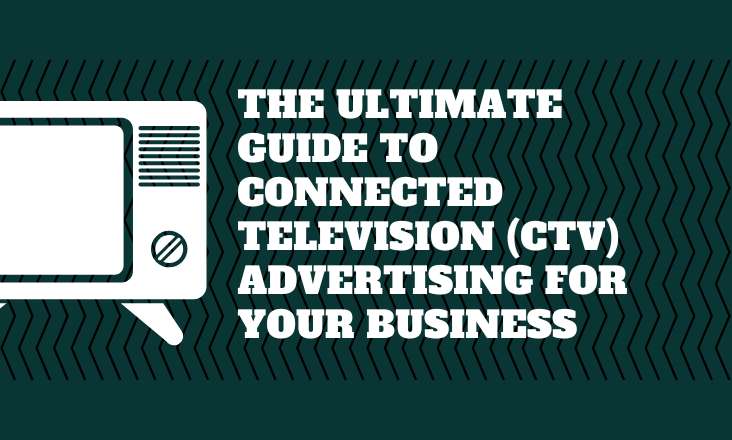In an era where linear TV viewing continues its relentless decline, Connected TV (CTV) has emerged as a behemoth in the advertising world. With nearly 80% of U.S. households now owning at least one CTV device, the shift in viewing habits has afforded advertisers unprecedented opportunities. And this isn’t a case of screen-switching – it’s a case of revolutionizing the way brands interact with customers.
The New Connected TV Experience
The old picture of families sitting around the television at 8 PM for a hit show is one that has been dramatically changed. Viewing today is highly personalized, with families averaging 4.7 streaming service subscriptions. The new family will more likely be watching something different on different devices simultaneously or binge-watching whole seasons over the course of a weekend.
This shift from appointment viewing to on-demand entertainment has basically changed the way consumers interact with content and, by extension, the way advertisers must plan. The living room is no longer so much about scheduled programming as it is about content experiences that are curated to fit into individual lifestyles.
Getting to Know Connected TV (CTV)
Connected TV is any TV set that can stream video content over the internet. This includes:
- Smart TVs with streaming built in
- Gaming systems like PlayStation and Xbox
- Streaming devices like Roku, Amazon Fire TV, and Apple TV
- Other internet-connected devices that turn traditional TVs into smart streaming devices
CTV offers unparalleled control over ad delivery, targeting, and measurement versus linear TV. Industry giants like Roku, Amazon Fire TV, and Samsung TV Plus have developed mature ad platforms that combine the scale of television with the targeting ability of digital advertising.
The Root Distinction: Program Purchasing vs. Audience Purchasing
Perhaps the most significant distinction between broadcast/cable television and Connected TV lies in the basic method of engaging with audiences. This distinction is frequently the source of confusion for business owners unfamiliar with advertising on CTV.
Cable and traditional TV advertising is program buying-oriented. Advertisers purchase time within a specific show – be it a football game, hot talk show, or nighttime drama – hoping that a significant portion of that show’s audience falls within their target market. It is actually an informed guess based on aggregate viewer demographics.
Connected TV, however, completely transforms this approach. With CTV, you’re not buying programs – you’re buying direct access to your target audience. The rich data available through CTV platforms means advertisers can reach their specific customer avatar regardless of what content they’re watching. This is a revolutionary shift in television advertising.
This is the key distinction to keep in mind: programming comes second to viewer data. While traditional TV asks “What programming will our target audience most likely watch?”, CTV has a definitive answer of “Who is watching now?” This capacity to target so precisely puts your message in front of the right viewers, regardless of what their content interests are.
Learning CPM Costs: Accuracy vs. Affordability
When thinking about using Connected TV advertising, it is helpful to realize that CPM (Cost Per Thousand Impressions) prices are higher than for linear television advertising. That price disparity is not a negative – rather, it is an indication of the specific targeting abilities behind the effectiveness of CTV.
Think of it this way: Old TV advertising is a shotgun, and CTV is a precision rifle. You’re paying more per impression because each impression is far more likely to hit your target customer.
The Targeting Premium
The more specific you become with your audience targeting, the higher CPM prices tend to be. For example:
- A big audience of Adults 25-54 will have a lower CPM
- That same demographic narrowed down to Males 25-54 who own full-sized trucks will be a more expensive CPM
- Continuing to add parameters like income level, home ownership, or specific buying habits will increase the CPM
The ROI Justification
While higher CPMs might seem intimidating at first, let’s look at the following:
If you’re selling truck accessories, would you rather reach:
- 10,000 general viewers at a lower CPM, where maybe 2% are truck owners
- Or 2,000 truck owners who are identified at a premium CPM, where 100% are prospects?
The higher CPM is more than worth it when you know each impression is being delivered to a qualified prospect. You’re not paying for wasted impressions to people who have zero possibility of converting. Additionally, you can use that same audience for other digital advertising mediums to raise frequency.
Why CTV Advertising Can Be A Game-Changer For You
The advantages of CTV advertising extend far beyond the basic targeting functionality. CTV platforms now offer:
- Granular audience targeting that combines the emotional power of TV with digital precision
- Real-time measurement of performance that allows rapid campaign optimization
- Lower points of entry for companies of any size
- The ability to reach younger audiences who’ve never subscribed to linear cable
Most notably perhaps, CTV advertising provides access to the growing number of cord-cutters and cord-nevers who are otherwise unreachable by traditional TV advertising.
Outside the TV Screen: Cross-Device Capabilities
Though the name “Connected TV” suggests that it is confined to television screens, the reality is more positive for advertisers. These campaigns are possible on a number of devices, including:
- Tablets
- Mobile phones
- Desktop computers
- Laptops
This cross-device functionality has an important cost implication:
CPMs for smartphones and tablets are lower than those for connected TV screens. The differential pricing offers marketers a capacity to budget-optimize across devices, reach consumers where they are most active, create device-by-user-behavior-specific plans, test multiple types of creative across devices, and lengthen campaigns more affordably by leveraging less expensive inventory.
Think of it as an ecosystem, not a single channel – your ads can follow your target market to all their streaming devices, with a unified message while also taking advantage of device-specific pricing and engagement profiles.
Maximizing Impact Through Addressable Targeting
At the heart of CTV’s effectiveness lies its sophisticated addressable targeting capabilities, powered by first-party data integration. One of the most powerful aspects of CTV advertising is the ability to directly reach your existing customers through your first-party data. The valuable information you’ve already collected through normal business operations – from customer transactions to marketing interactions – can be seamlessly integrated into your CTV strategy.
This includes everything from customer email addresses and physical locations to website visitor data and purchase or lead submission history. By feeding this data into the CTV ecosystem, you’re not just finding similar audiences – you’re actually reaching your known customers and those who have shown interest in your brand on their streaming devices.
This direct connection to your customers and target markets is such that your advertising spend is hitting those people who have already made contact with your company, and you can push on out to their households for wider coverage if necessary.
Advanced Targeting Capabilities
CTV advertising allows you to create very targeted audience segments that are the exact mirror image of your target customer profile. The targeting options are extensive and can be layered to create very niche audience segments.
At the household level, you can target by:
- Household composition and demographics
- Income levels and net worth
- Home ownership and home value
- Purchase behavior and brand loyalty
- Life events and big-ticket purchases
- Special interests and lifestyle
- and many, many more
Location targeting adds another strong dimension:
- Specific neighborhoods or zip codes
- Radius around your business
- Competitor locations for conquest campaigns
- Event locations and temporary locations
- Multiple business locations or service areas
Behavioral targeting allows targeting based on real behavior:
- Recent purchase patterns
- Shopping patterns and preferences
- Travel patterns
- Entertainment interests
- Technology usage
- Seasonal activities
These targeting choices can be mixed and paired to precisely identify the audience you wish to target so that your ad budget is utilized to reach the most appropriate potential buyers.
Location-Based Enhancement
Geofencing brings another level of depth to CTV campaigns by allowing:
- Targeting of specific neighborhoods or business districts with targeted messaging
- Competitor location targeting for conquesting campaigns
- Event-based targeting for short-term locations
- Retail location targeting for drive-to-store campaigns
Geofencing, as we mean it, is the actual ability to aim at a specific place, such as a company’s building or parking lot, with specificity.
It is not the case that Google Ads possesses the ability to carry out geofencing. Rather, Google Ads typically offers a minimum targeting radius of around 1 km, which is less than actual geofencing ability.
If anyone ever lets you know they can “geofence” in Google Ads, they’re probably not telling you the whole story or simply don’t understand the merit of actual geofencing.
Measurement and Attribution
You need to understand the effect of your CTV commercials, and that is where conversion tracking is used. With proper conversion tracking, you can track some of the behaviors your viewers do after seeing your commercials. They may be visiting your website, completing a contact form, making a purchase, or even calling your company. Such direct response measurement gives you concrete proof that your CTV campaign is generating real business outcomes.
For direct response advertisers where you are attempting to drive direct action such as site visits, purchases or lead form fills, attribution is relatively easy. You can know if the person who viewed your CTV ad then visits your site or purchases, or fills out a lead form providing you with a solid sense of your campaign performance.
Creative Best Practices for CTV
- 30-second spots remain standard
- High-quality production values remain essential
- Clear calls-to-action optimize response rates
The effectiveness of your creative depends on the audience you’re targeting. If you’re focusing on a specific niche, it’s wise to create ads that address their unique pain points, rather than relying on a general advertisement you’ve been running elsewhere.
For example, if you’re an auto dealer looking to boost fleet sales or “work truck” business, a broad sports car, minivan, electric vehicle, or sedan campaign simply will not cut it. What you’ll need is highly specialized creative that calls out your target audience specifically and says you’re aware they need business fleet cars—and that you have exactly what they’re looking for.
Not sure if your current creative assets will cut it for a connected TV campaign? Contact us. We’ll take a gander and give you an honest assessment—whether they’re ready to roll or if you’ll need new assets created.
Real-World Applications
Let’s discuss how precise CTV targeting can be used in the real world with some practical examples.
Think about a high-end general contractor in Denver, Colorado, who wants to sell upscale kitchen, bath, and whole-house remodels. Conventional TV advertising would spend a lot of budget reaching someone who would never pay them – renters, homeowners who recently bought a new home, and homeowners who live in homes that are not in the luxury category.
With CTV, this contractor can be extremely targeted. They can target:
- Owner-occupied homes (excluding apartment buildings)
- Homes built before a certain year (aiming for homes well-suited for renovation)
- Residences with over certain value thresholds
- Families with minimum income levels
- All located within a 20-30 mile radius of downtown Denver
This level of targeting puts the contractor’s message in front of only those with the capacity and likely desire for upscale renovations. It eliminates wasteful impressions on non-qualifying viewers and, most valuable of all, saves their salespeople time wasting on non-qualifying leads that will not fit at their high-end service level.
A good example is an auto dealer that specializes in leasing high-end cars. Rather than advertising to their whole market, they can target those households that:
- Have leased high-end cars previously
- Have incomes in specific ranges
- Reside in neighborhoods with a high percentage of high-end automobile ownership
- Are geographically in their target service area
- Have leases expiring in the next 6 months
This targeting enables them to place their ad spend on qualified leads that are in fact in-market for their product, maximizing their ad spend.
The targeting capability of CTV is so detailed and advanced that we could provide examples all day.
The choices are almost limitless, and the level of precision available is almost mind-boggling. In fact, the issue isn’t finding means of reaching your ideal customer – it’s deciding from the vast array of targeting options available what combination will be most effective for your specific business needs.
Getting Started with CTV Advertising
The dive into Connected TV advertising starts by understanding your business objectives and how they align with the strengths of this powerful medium. Every successful CTV campaign (and ad campaign, for that matter) must begin with specified objectives – whether that’s establishing brand consciousness, driving web traffic, initiating leads, or driving in-store traffic.
They will dictate all the nitty-gritty pieces of your campaign strategy.
Then there’s identifying your ideal audience, and that’s where CTV truly excels. Rather than making educated guesses about who might be watching specific shows, we can precisely define and target your target market. We do this by examining your current customer base, discovering who they are, and then using that data to find like audiences across the CTV universe.
When budgeting for CTV advertising, we recommend taking a strategic approach to allow for sufficient testing and scaling. While most companies might be accustomed to traditional television advertising budgets, CTV offers more flexibility and control over how your ad spend is distributed. We typically start with a targeted test campaign that allows us to gather data, measure performance, and optimize for outcomes before scaling investment based on proven performance.
Creating compelling video content is another crucial aspect of achieving CTV success. Your creative assets need to be attention-grabbing and convey your message effectively in a streaming context. We can assist you in the production process or reformat existing video assets to thrive in the CTV ecosystem so that your message gets delivered to your audience.
Conclusion
Connected TV is the future of television advertising, combining the emotional connection of linear TV with the precision of digital advertising. As audiences continue to evolve and technology advances, CTV will be at the forefront of effective advertising campaigns.
For forward-looking brands, the moment is here to take up CTV advertising and develop strategies that leverage its unique strengths. The marriage of precise targeting, quantifiable results, and engaging formats makes CTV an essential component of the marketing campaign in this age.
Linear television viewing, broadcast and cable, is diminishing year by year, while Connected Television is the way of the future. To put this in perspective, remember back in the early 2000s when phone book advertising was the norm—until Google and other search engines appeared on the scene and revolutionized advertising, rendering the latter virtually obsolete.
We see a similar shift happening now: linear and broadcast TV are becoming outdated, much like phone books, while Connected Television is transforming the advertising landscape, just as Google once did.
This article provides a basic overview of connected television advertising and its structure, but if you’re still unsure how it works or how it could apply to your specific situation, feel free to reach out.
As an agency, we’re genuinely excited about the future of connected TV and want everyone to understand its potential. We’d be happy to discuss your business and explore how connected television could help drive more revenue. The conversation is completely free and comes with no obligation.
Get Your Business On Connected TV With OEPMA
Ready to harness the power of precision-targeted CTV advertising for your business?
OEPMA can put your message in front of your audience.
We’re experts at putting your creative assets in front of the right individuals in the CTV ecosystem to drive more business for you.
Our workflow gets your campaign live fast so your business can enjoy the full advantages of this ad medium.
Contact us today to learn more about how we can assist you in getting started with a CTV ad campaign and what information we’ll need to get started.





